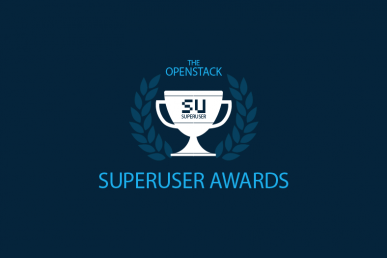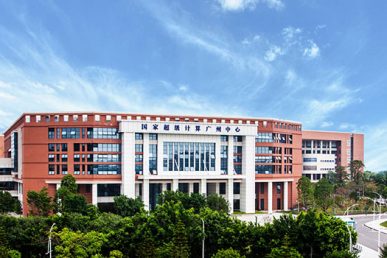It’s time for the community to help determine the winner of the Open Infrastructure Summit Denver Superuser Awards, sponsored by Zenko. The Superuser Editorial Advisory Board will review the nominees and determine the finalists and overall winner after the community has had a chance to review and rate nominees.
Now, it’s your turn.
The EnterCloudSuite team is one of four nominees for the Superuser Awards. Review the nomination criteria below, check out the other nominees and rate the nominees before the deadline April 2 at 11:59 p.m. Pacific Standard Time.
Rate them here!
Who is the nominee?
The EnterCloudSuite team is made up of 14 people; four of them will be in Denver: Mariano Cunietti, Federico Minzoni, Jacopo Secchiero, Mattia Scalvini. EnterCloudSuite has been a public OpenStack platform ever since launching in August 2013. Enter, based in Milan, Italy was acquired in June 2018 by a larger infrastructure group called Irideos. (Until the merger is complete, our company is officially Enter/Irideos.)
How has open infrastructure transformed EnterCloudSuite’s business?
The team started in 2011 working on the Cactus release. It completely changed our views on infrastructure, moving from hardware and vendor-based to an open-source software based model.
For the last several years, the team has faced the challenge of delivering fast and reliable changes to their public cloud. They built a CI/CD process using GitLab, Jenkins and Docker to deliver rapid updates in production. The have also moved from one OpenStack update per year, to three per year (yes, we know there are only two releases every year, but we were lagging behind.)
The ability to run their own infrastructure with no support contract outside the company made them very accountable, competent and fast. This value was transferred to their customers when building their infrastructures on their cloud, resulting in 50 percent year-over-year growth.
How has EnterCloudSuite participated in or contributed to an open source project?
Our team is mainly made up of infrastructure and operations people. With only two developers, it hasn’t been possible to contribute code back to the community. What the team did instead was to provide early feedback on new functionalities (especially in Neutron) and to collaborate building real-world scenarios for the developers, including pitching in with testing and running them in production. They’ve also built a lot of connections in the European community, trying to position OpenStack as the conquering David in the Goliath of Europe’s public cloud arena. In 2015, they won the European Commission DIGIT Cloud I Tender — the only open source, only OpenStack player to meet the criteria, making them official providers for EU institutions. They have also been co-organizers of the OpenStack Day in Italy since 2013 as well as organizing ops meetups.
What open source technologies does your company use in its open infrastructure environment?
The EnterCloudSuite stack is 100 percent open source. Some of the tech we use includes:
- Compute – KVM
- Networking – OpenvSwitch and L3 agent
- Block Storage – Ceph
- Object Storage – Swift
- Hardware – open compute gear
- On the SCM/ALM level, GitLab, Jenkins, Portus.
- For automation, Terraform, Ansible and Go, all baked together in a tool we named “Automium” after the Atomium monument in Brussels (basically the symbol of Europe).
- Monitoring and logging: Prometheus, Icinga, InfluxDB, ElasticSearch, Grafana, Kibana
In the process of adopting these technologies, the team has severed relationships vendors. We’re now a vendor-free company (except working with SwiftStack but, hey: Joe Arnold is our friend!)
What’s the scale of your open infrastructure environment?
As a public cloud service provider, we can’t publish precise metrics around customer or platform consumption. We can divulge that our platform has been engineered and deployed to support public cloud workloads capable of serving the whole EU private and public sector market and beyond. OpenStack is the compute, storage and networking engine that drives their cloud native infrastructure product line, which has been engineered specifically for today’s digital community focused on delivering cloud- native applications.
What kind of operational challenges has EnterCloudSuite overcome during their experience with open infrastructure?
The team has learned that customers are much more relaxed and collaborative if they know what’s going on and can prepare ahead. That’s why every time they plan (or screw up!), they do it publicly on enter.statuspage.io.
That means they usually don’t need to do rolling upgrades or live migrations but try to keep the maintenance windows the narrowest possible. If you automate all the things and do your homework (dry-runs and planning), no one is going to complain or even notice what you’re doing.
To mention some challenges: upgrade PG number on Ceph (took hours), some early OpenStack upgrades (around Kilo), bug fixing on the beta OFED firmware for Mellanox NICs (they were great in supporting us) and scaling RabbitMQ on controllers at some point when the workload increased due to increased demand.
How is EnterCloudSuite innovating with open infrastructure?
The team truly believes that cloud is changing how organizations work. Automation means industrialization of processes and it requires standardization of processes first. Also, the way people collaborate in the cloud space and in the collaborative communities is something they believe will change they way all the industries work today.
On a technical standpoint, they are moving quickly to Kubernetes as an alternative to new standards that are hiding dangerous lock-ins from the big players. In addition they’re exploring the implications and OpenStack capabilities in terms of edge computing following the acquisition by a network infrastructure company. They expect OpenStack and Kubernetes to play a big role in that field.
Each community member can rate the nominees once by April 2 at 11:59 p.m. Pacific Standard Time.
- Demystifying Confidential Containers with a Live Kata Containers Demo - July 13, 2023
- OpenInfra Summit Vancouver Recap: 50 things You Need to Know - June 16, 2023
- Congratulations to the 2023 Superuser Awards Winner: Bloomberg - June 13, 2023

)









